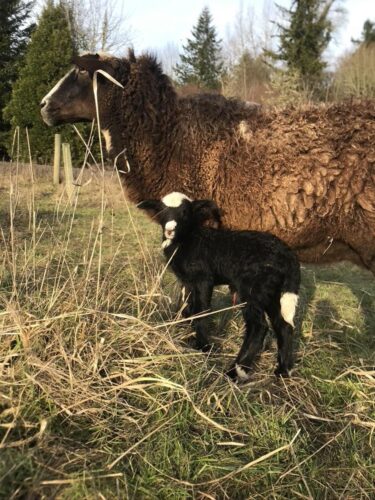Senior Elea Hewitt described herself during her gap year as the happiest she had been in years. Returning to Yale from a year spent on her family’s Oregon ranch, she has fascinating perspectives on the intersection between farming and agriculture, social justice, and sustainable environmental practices.
Hewitt grew up in rural Oregon in the Willamette Valley on her family’s farm. Homeschooled until high school, Hewitt looks back fondly on her primary education. She was taught by her mother and given freedom to let her interests guide her learning, which often took place outside. Now an Environmental Studies major at Yale, Hewitt has observed the continued relevance of things she learned early on. For example, she was already familiar with some of the concepts in her Economics of Natural Resources class because of experiences in her early childhood.
A gap year gave Hewitt the opportunity to connect with her family farm in a way that she never did while busy in high school. She enjoyed spending days outside, being active, and caring for the animals. Beef and lamb are the farm’s main products, but they also have chickens, turkeys, and a few ducks. Hewitt highlighted that one of the joys of the ranch is stewarding Navajo-Churro sheep and maintaining relationships with other breeders to preserve both the breed and a familial cultural practice.
Currently, Hewitt’s family is working to convert pastureland into multi-tiered agroforestry silvopasture, which combines tiers of trees and other plants with livestock. They plant chestnut trees at the top, then hazelnut trees, then berries and vines. At the bottom, they plant ground cover, such as mushrooms and sorel. Animals graze between rows of plants, eating their fallen food, pruning them, and providing manure to help them grow. This method of planting maximizes production value, allowing for the cultivation of more calories per square acre. Most importantly, because each plant requires and replenishes different resources, it helps restore the soil’s nutritional balance.
Imbalances in soil nutrition have become a problem on many large-scale farms. Although it may seem that industrialized agriculture is more efficient than smaller scale farms, this is only the case for the first ten to fifteen years. Over longer timelines, it becomes extremely wasteful, costly, and inefficient due to problems with soil quality, water contamination, and transport cost.
Hewitt’s farming background has also made her aware of the injustices that common industrial farming practices cause, to both the planet and humans.
“Humans have lived on the planet for so long, but we’ve only lived [in an industrialized way] way for two -hundred years. It has resulted in so much poverty and inequality. Industrial agriculture is agribusiness, and there’s something unethical about centering a business model around something that is a basic need,” Hewitt said. “However, due to the way the agribusiness system developed in America, there is little room for a just transition at this point. An overhaul centering Indigenous and local agriculture production pathways is necessary.”
Hewitt would like to see a return to community-based food production, with more people involved in farming, more farmer’s markets, and less reliance on food sourced from afar. “I think society would be a better place if more people had experience with agriculture. I think there is a disconnect from reality that exists today, a result of peoples’ lived experiences which often center around academic or non-physical work,” Hewitt said. “At the end of the day, we have to remember that we’re human; we’re animals. We have a body that was designed for work, and it’s important to be well-rounded.”
Hewitt identified some changes she would like to see here at Yale. First and foremost, she encourages the university to hire more Indigenous faculty. On the individual level, she wishes that each Yale student could visit both the Yale Farm and a landfill. Encouraging them to face a reality they might not encounter on a daily basis, she believes such experiences could leave a lasting impression, impacting students’ future decisions. Hewitt also raised the idea of creating a “climate credit,” which would require students to gain environmental awareness, just as they are required to learn about math or science. Elea expressed how this awareness is crucial; ignoring it is no longer an option.
After college, Elea hopes to work on different types of farms, work for a non-profit, and travel. She hopes to learn through these diverse experiences before she eventually takes over her family’s farm, where she will continue to implement Indigenous and environmentally sustainable practices, working towards a more socially just future.

